
Did you know that Viggo Mortensen, the actor who played Aragorn in the Lord of the Rings movies, broke his toes on-set by kicking a helmet? The take ended up in the final cut, and Aragorn’s cry of frustration, grief, and despair is made all the more real knowing that poor Viggo’s toesies were probably burning in pain like the fiery pits of Mordor.
But you wouldn’t know this fact unless you had watched the LOTR DVD special features, which is quite the undertaking. The movies themselves are very long, so to sit through hours and hours of extra stuff is a big ask — but it’s worth it, because you can be That Guy who says “oh, this bit is where Viggo breaks his toes” when you watch it with friends.
Generally, video games don’t really have the same kind of special features, since making games isn’t quite as interesting to watch as making movies, and the developers aren’t usually as good on-camera as professional actors. But The Great Ace Attorney Chronicles does, and it’s actually one of the best parts of the game, especially this late in the Ace Attorney series.
When I first played Phoenix Wright: Ace Attorney, I would have been quite young, and not quite as interested in video game music, development, and concept art — in fact, I barely knew that any of those things really existed. All I really cared about was playing the game. But as the years went by, I became fascinated with the changes in the series: the detailed animations, the upgrade to 3D models, the way the soundtrack grew and deepened with each game. I wanted to know more about how the characters were designed, how the translations worked, and how on earth anyone managed to come up with the incredible theme for prosecutor Godot.
The Great Ace Attorney has a little section called “Special Contents”, which at first glance looks like not much: “Accolades”, which is the in-game achievements; “Gallery”, which is largely concept art; “Auditorium”, which is music and voice lines; “Tailor”, which allows you to change the characters’ outfits in the second game; “Escapades”, a bunch of “short extra episodes”; and “Credits”.
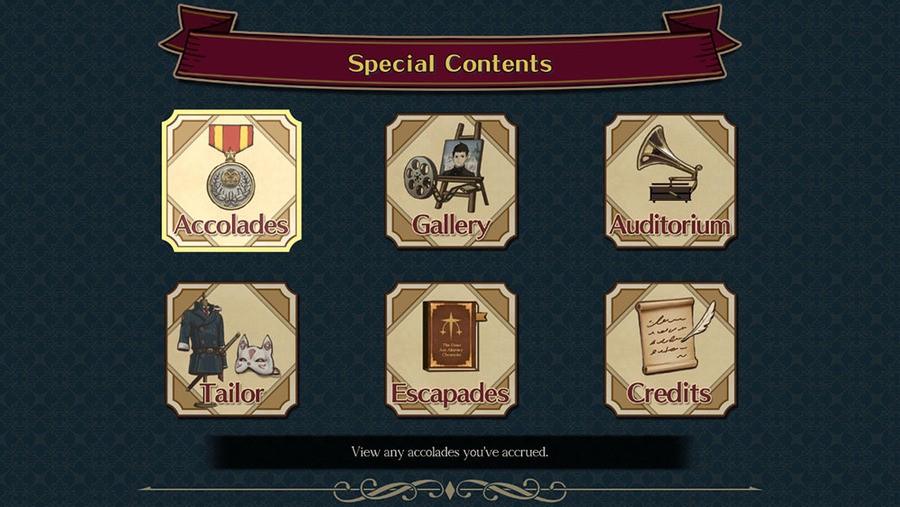
But dive further into the Gallery, Auditorium, and Escapades, and you’ll find a treasure trove of content. Do be warned, though — the special features can potentially spoil some things, like a particular character appearing, or a voice line that they haven’t said yet.
[image:3|[/image]
[image:4|[/image]
The Gallery contains scanned notes and concepts with commentary from the team, unused character designs, and a “Special Exhibit” that unlocks when you complete the game. It’s also where you’ll find “Moving Pictures”, a bunch of promotional animated content which is well worth watching, especially as much of it was untranslated and unpublished until now. “Special Trial 2017” has Phoenix and Maya meeting Ryunosuke and Susato, and it’s fantastic; “Ryunosuke Naruhodo’s Seven Days of Sin” is all about Herlock Sholmes getting annoyed at Ryunosuke, and it’s as weird as it is wonderful.
“From the original Japanese release of ‘Adventures’, we present two special videos that were shown exclusively at events and thirteen ‘Indictment’ and ‘Adjudication’ videos, where players voted on Ryunosuke’s guilt or innocence each evening online and the results were posted the next day.”
— Capcom’s description of the Moving Pictures
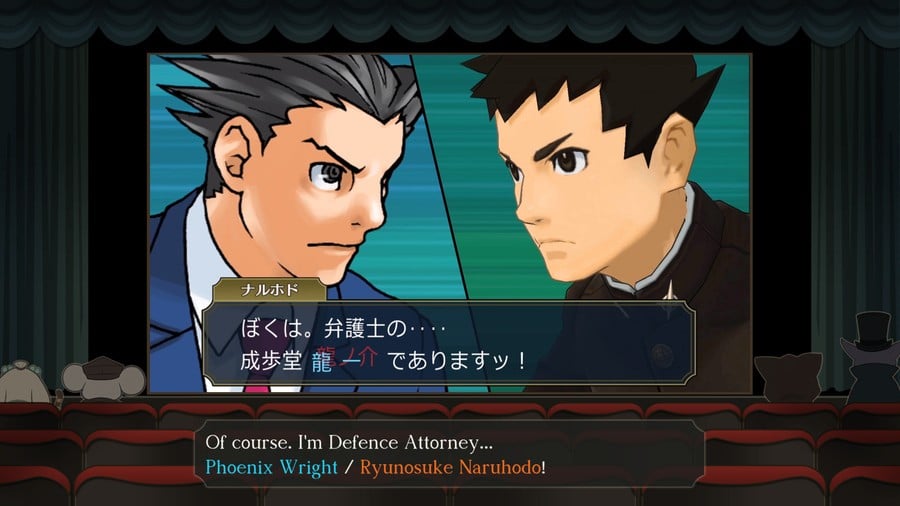
The Auditorium, likewise, contains not just the music and voices in the game, but the unused compositions, too, along with very brief explainers from the composers which are charmingly goofy (they use “lol” a fair bit). You’ll get to see how the Ace Attorney soundtrack and audio come together, working through drafts of songs and slowly refining them to get the finished product. My personal favourite is all the scrapped versions of the iconic “dialogue typing” sounds. Who knew there were so many types of type?
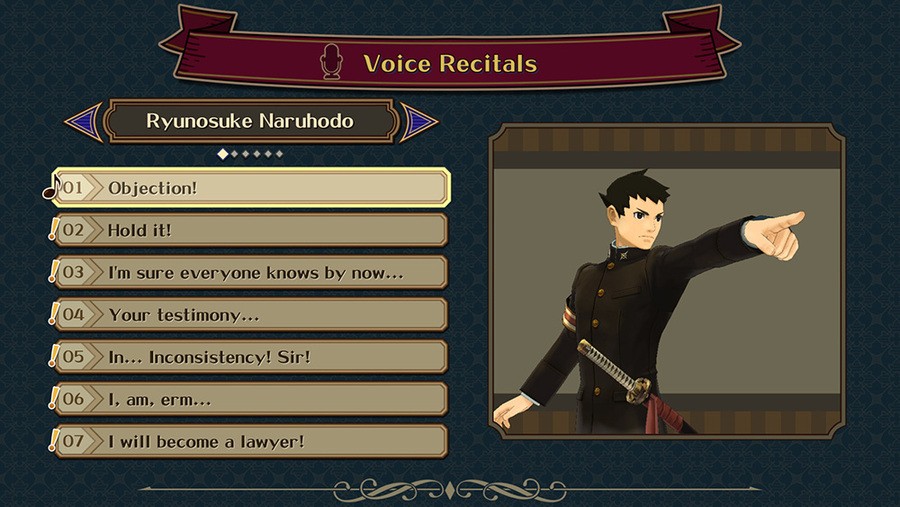
Finally, there are the Escapades: eight mini-episodes which you definitely shouldn’t play until you’ve finished the first game. They make for a nice little appetiser between the main courses of Adventures and Resolve, fleshing out a few of the main characters in each case with short, low-stakes vignettes — a nice change of pace from all the life-and-death stuff in the main story.
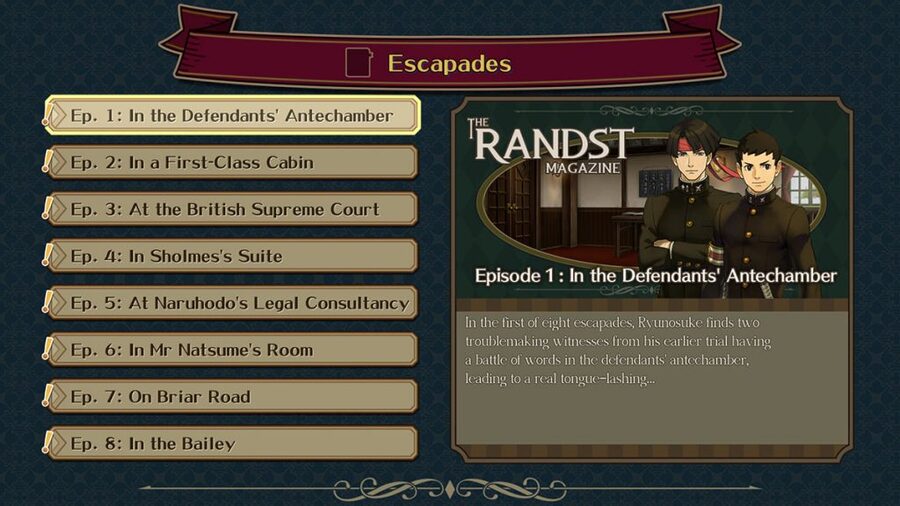
A small shout-out, I suppose, has to go to the “Tailor” section, too, because even though the alternative outfits are only for use in Resolve, it’s rather endearing to see Sholmes solving crimes in a cute pink “Japanese jumble” ensemble. And the “Accolades” bit might be a bit odd — in-game achievements? On a Nintendo console?! Goodness me — but they are fun, especially for long-time fans who’ll appreciate the award for talking about ladders.
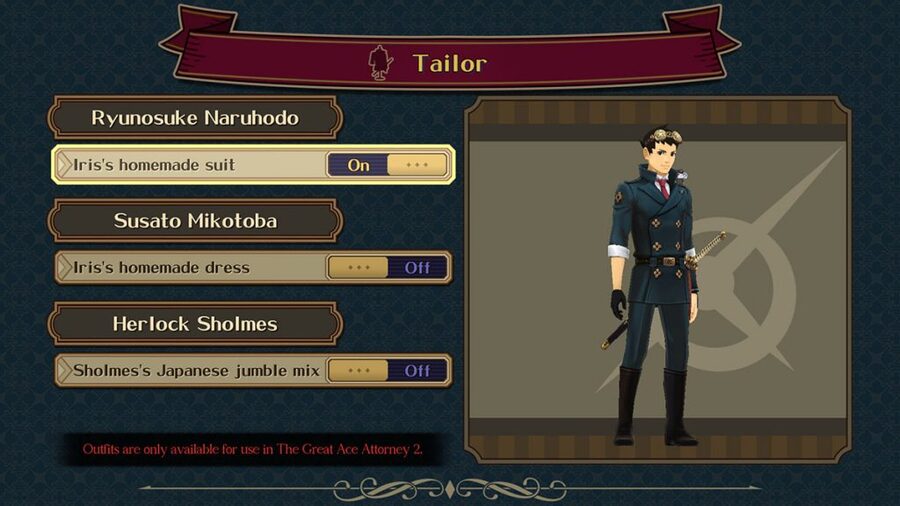

Some of those achievements will be hard to get, of course, like the one for doing certain things in a certain order, or the one that requires you to examine every single shovel in the game, but The Great Ace Attorney at least lets you skip to certain checkpoints in each case, making it a little easier to be an achievement hunter.
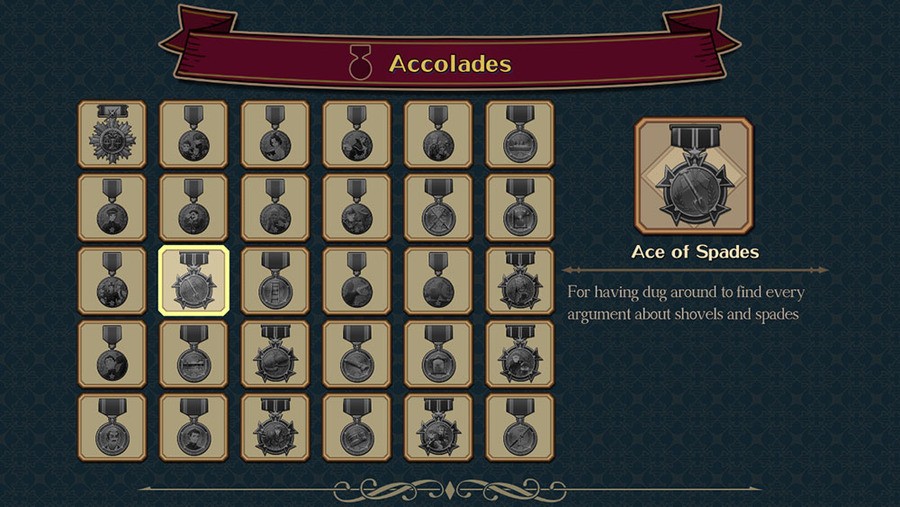
Finally, one last small shout-out goes to the fact that the main menu background changes to represent the case you’re currently on. It’s so cool!!
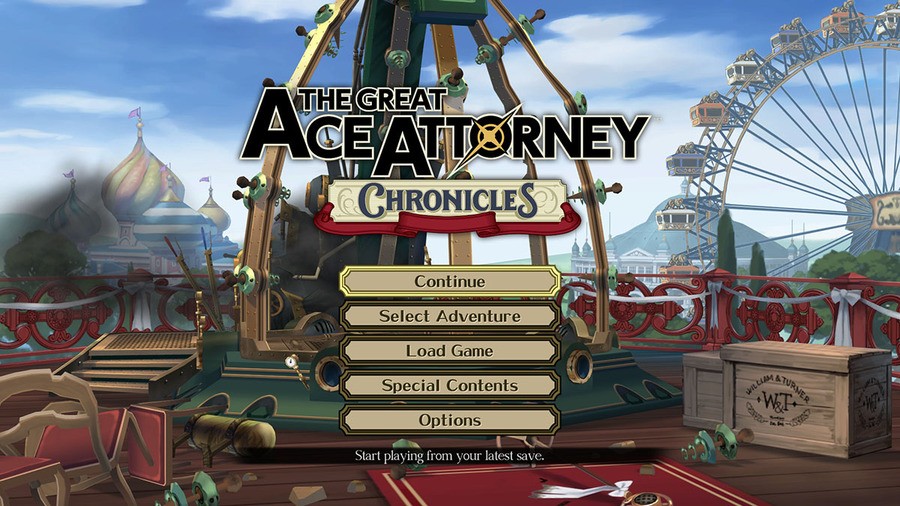
I would have said that The Great Ace Attorney Chronicles is worth the admission price alone for these two 30+ hour games, but the added value of all these special features is incredible. As a fan of video games, development, or just fun facts, they’re unmissable, and I really hope that Special Features become more of a thing in games in general. After all, how will we ever know about the state of Mario’s toes otherwise?
